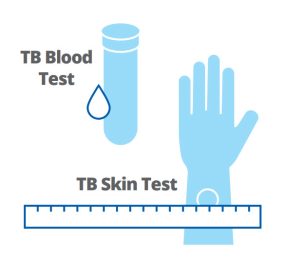Healthcare Providers

Healthcare Providers Can Prevent TB
Testing and treating latent TB infection is a critical step to eliminating TB in the United States and protecting your community. As a trusted source of health information, it’s important to initiate a conversation about latent TB infection and TB disease with your patients at risk for TB.

Risk Factors for Latent TB Infection & Development of Active TB Disease
While TB is common throughout the world, individuals who were born in or frequently travel to Asia, Africa, or Latin America have a higher chance of being infected with TB. People with HIV infection or who are immunocompromised, and who have latent TB infection, are more likely to develop active TB disease than others. If your patients fall into one of these categories, consider testing them for TB.

Testing for Latent TB Infection
Testing for TB infection should be a routine and integral part of health care for patients with increased risk for TB. TB blood tests or Interferon Gamma Release Assays should be considered for patients who have been vaccinated for TB with the Bacille Calmette-Guérin, or BCG vaccine. CDC and the U.S. Preventive Services Task Force (USPSTF) recommend testing people that are at increased risk for TB infection.

Treating Latent TB Infection
More than 80% of U.S. TB cases are believed to be associated with longstanding untreated latent TB infection. Shorter rifamycin-based treatment regimens for latent TB infection make it easier than ever for healthcare providers to treat latent TB infection to prevent TB disease. Resources such as treatment information brochures, and medication trackers and symptom checklists can help your patients complete the full course of treatment.

- A Sermo blog describing the critical role healthcare providers play in eliminating TB and 4 tips for starting conversations with patients about TB.
- Your state or local TB program can provide TB data for your community.
- TB Centers of Excellence for Training, Education, and Medical Consultation support U.S. TB prevention efforts.
- The TB Elimination Alliance is a national partnership of community leaders dedicated to eliminating TB inequities through education, raising awareness, and innovation.
There are resources available to support you in coding and billing for latent infection TB testing and treatment.

